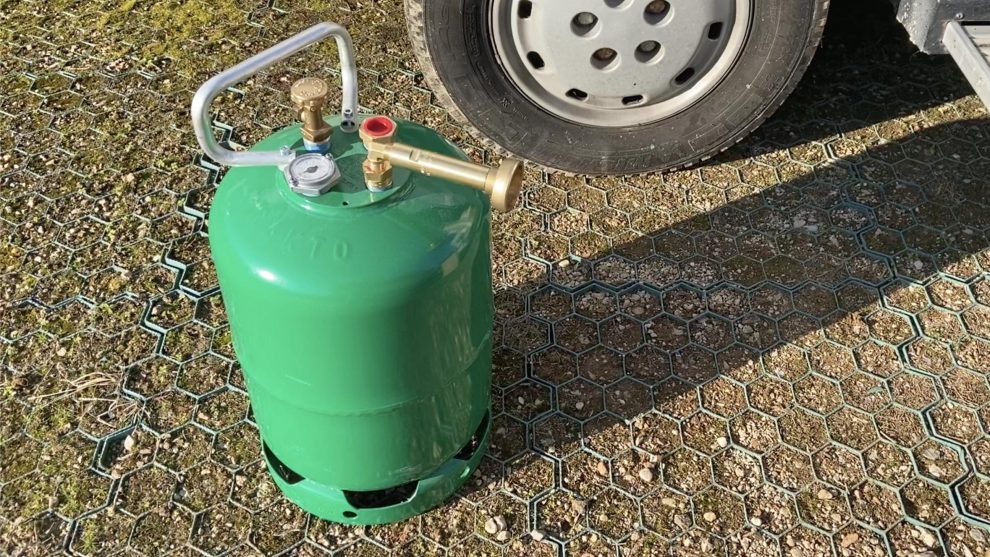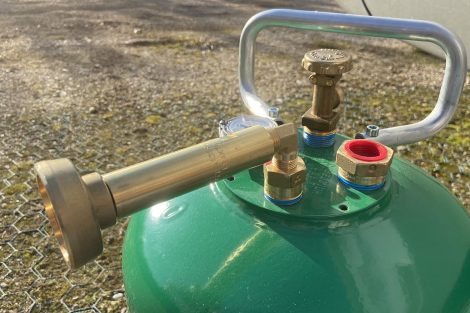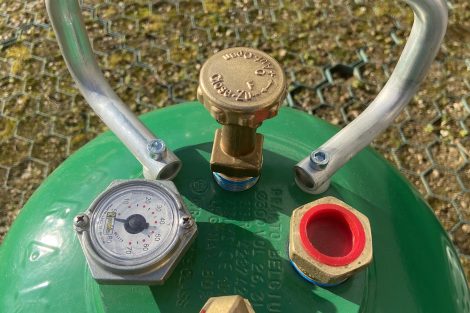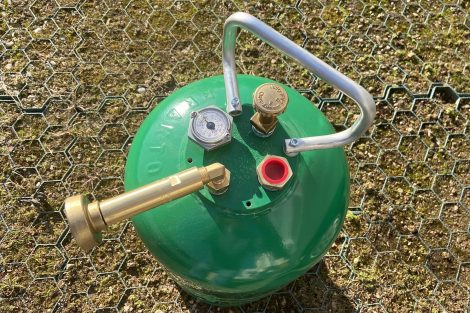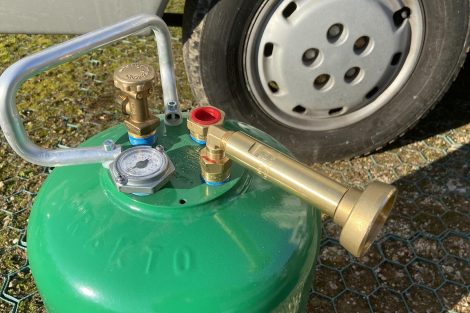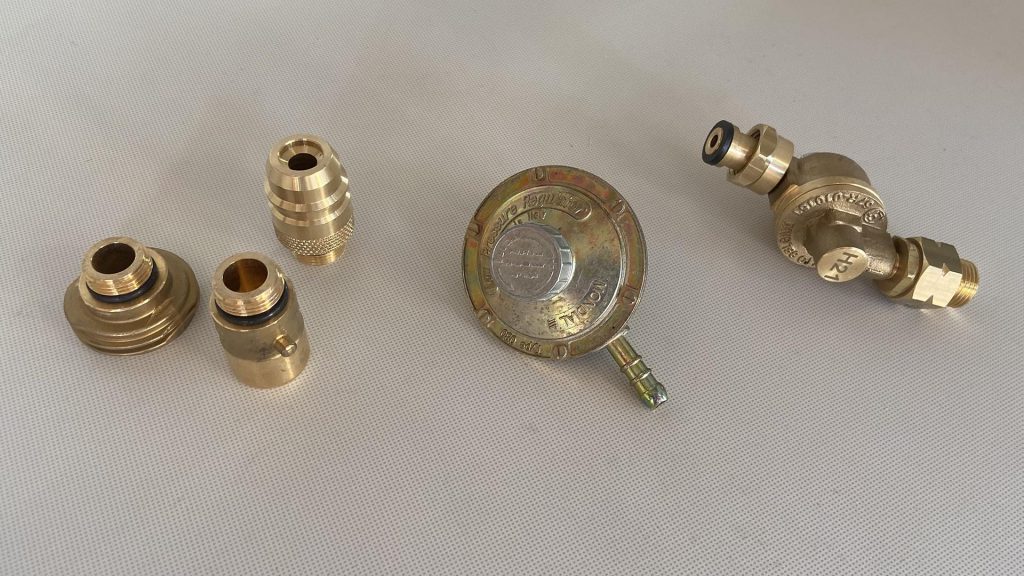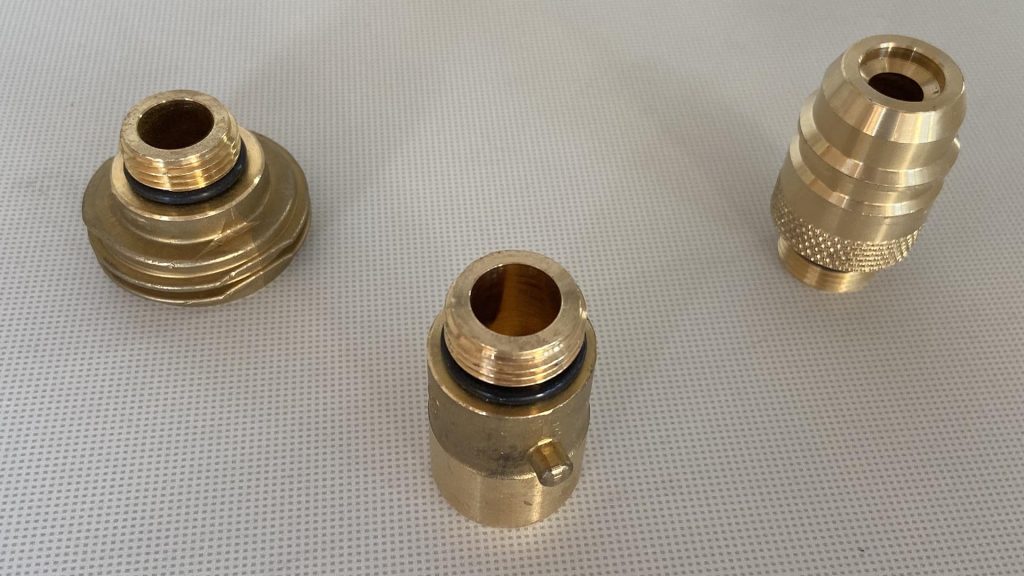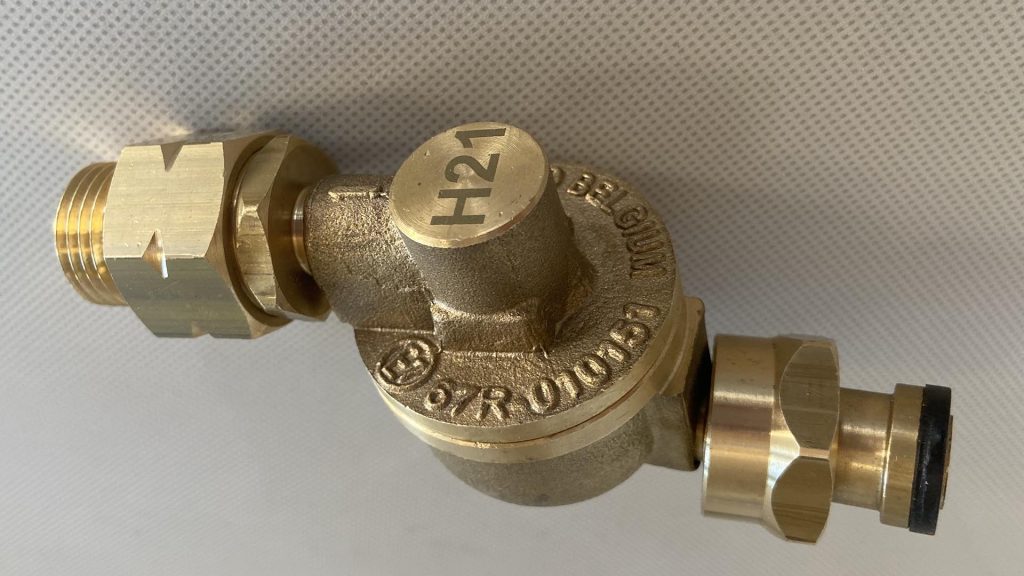February 13, 2022 – The issue of gas in motorhomes is always hotly debated. There is no doubt that the classic pair of 11 kg LPG (Liquefied Petroleum Gas) cylinders is the most widespread solution of all, but also the one that generates the greatest concerns. Those relating to safety are the main ones, but objectively unfounded. The gas system, like the electric one, requires compliance with regulations and periodic checks. Operations that should always be entrusted to a professional: however much our do-it-yourself skills may be developed, the technical knowledge of these specific sectors should never be underestimated.
If the presence of a gas system is not a source of concern in terms of safety, there are, however, several other elements that constitute real nuisance for users. The first one is that when a cylinder runs out, it is necessary to connect the reserve one, and at certain times or in particular climatic conditions this operation can become a real nightmare. Fortunately, there are technical solutions here that allow you to overcome the difficulty. On our Falkorwe have installed the Truma DuoControl CS, which automatically switches from one cylinder to another when one ends.
The three limits of cylinders: availability, cost, compatibility
The three aspects with which it is more difficult to live with concern the availability of cylinders, their cost and their compatibility (if purchased abroad) with our system. In summer, the first problem is very relative: with the heating off, the use of gas for cooking, heating the water and cooling the trivalent absorption refrigerator, consumption is modest. We, who normally live in a van, take about a month to use up a cylinder.
Things change when the climate is colder: in the winter months with temperatures close to zero, such as those we experienced in the Po Valley in recent winters, a cylinder lasted us a week. And our vehicle is small and has excellent insulation: with larger vehicles and with temperatures well below zero, a cylinder can last no more than two or three days. Regardless of this, however, you have to look for the replacement, and this is not always simple: you have to look for the same brand, otherwise the retailer may refuse to take the empty one and ask for a deposit for the new one.
Do not refill the cylinders at the gas station!
The second issue is that of cost. It is true that if you use the motorhome only for the holidays the problem can be limited, but in Northern Italy an 11 kg cylinder currently could costs as much as €35. By often using the vehicle in the winter, the economic outlay can become challenging.
Finally, abroad it is much more difficult to find a cylinder, both because the connection is almost always not compatible with our fittings, but above all because no one takes our empty cylinder to supply us with one at no cost (gas aside). Thus, despite the presence of any adapters, changing cylinders outside Italy can be very difficult.
Here a technical and safety note is important: refilling normal gas cylinders designed for domestic use at an LPG distributor for motor vehicles is not only very forbidden, but also extremely dangerous. These cylinders can be refilled only in the special structures present in the gas distribution centers and exclusively by specialized personnel. These containers, in fact, do not have any specific safety equipment and, if overfilled, they can explode.
The alternatives are expensive
The alternative to all this is called diesel oil (for heating), compressor (for the refrigerator) and induction (for the kitchen), but the cost of converting your vehicle is very high, having to install a heater and above all think about an electrical system capable of managing the consumption of these devices.
Those who do not want to give up gas (which is in any case very practical, low-polluting, and effective) can think of installing a gas tank, which has two fundamental characteristics: a safety valve that cuts off the gas supply in the event of an accident and a double internal chamber, so that the total capacity of the tank is only used up to about 80 percent. In case of gas expansion due to temperature variations there is no risk, because the remaining 20% volume is ready to accept it. Here there are two limits: the first is that between the cost of the product and installation the figure to be foreseen is very high, the second that not all motorhomes have enough space under the body to accommodate it. Falkor has the characteristic of being set up on a flatbed van, which offers little space in height under the floor. In this case, the gas tank cannot fit and other more invasive solutions, such as cutting a part of the floor, have proved too complex to carry out.
The solution is called the Prakto mobile tank
All this boring text to get to tell you what solution we have arrived at. And to tell the truth, we could have even thought about it before, since it was under our eyes: we talked about it in this article. Thanks to the collaboration of GES International, one of the main Italian distributors of products and accessories for outdoor holidays, we are about to install the Prakto mobile tank on Falkor. This solution will offer us several advantages.
We already know that we will have a completely safe product, thanks to the presence of an automotive-type valve that will automatically lock in the event of a collision and the filling limited to 80 percent of the capacity. We also know that, despite the European certifications, this product is not recognized by Italian legislation, and therefore we could find gas station who refuse to supply. For now, from what we read on social media, it seems that this problem is quite limited, but when we find ourselves on the road, we will be able to tell you more precisely.
Safe, practical, economical
What we have decided to do, for maximum flexibility, is to install the Prakto mobile tank in a fixed position, with the attachment on the wall, so that it can be refilled from the outside, and to keep a common 11 kg cylinder. In case of refusal to refuel, we will always have the “standard” supply, while if we find ourselves in the situation where it will be difficult to find a usual cylinder we will always have the possibility to refill the Prakto.
In this way we will also lower the average cost of gas (the one made to distributors costs less than that distributed in cylinders) and we will be able to go abroad with greater peace of mind: the presence of an adapter kit that covers all of Europe should guarantee us the possibility to recharge in each country.
The 26.3-liter Prakto mobile tank (which should be roughly equivalent to 15 kg) has a suggested retail price of €430, excluding accessories (fixed installation kits, fittings, filter, adapters).
©2022 Seimetri.it – If you want to leave a comment on this article, you can do it on our Facebook page











